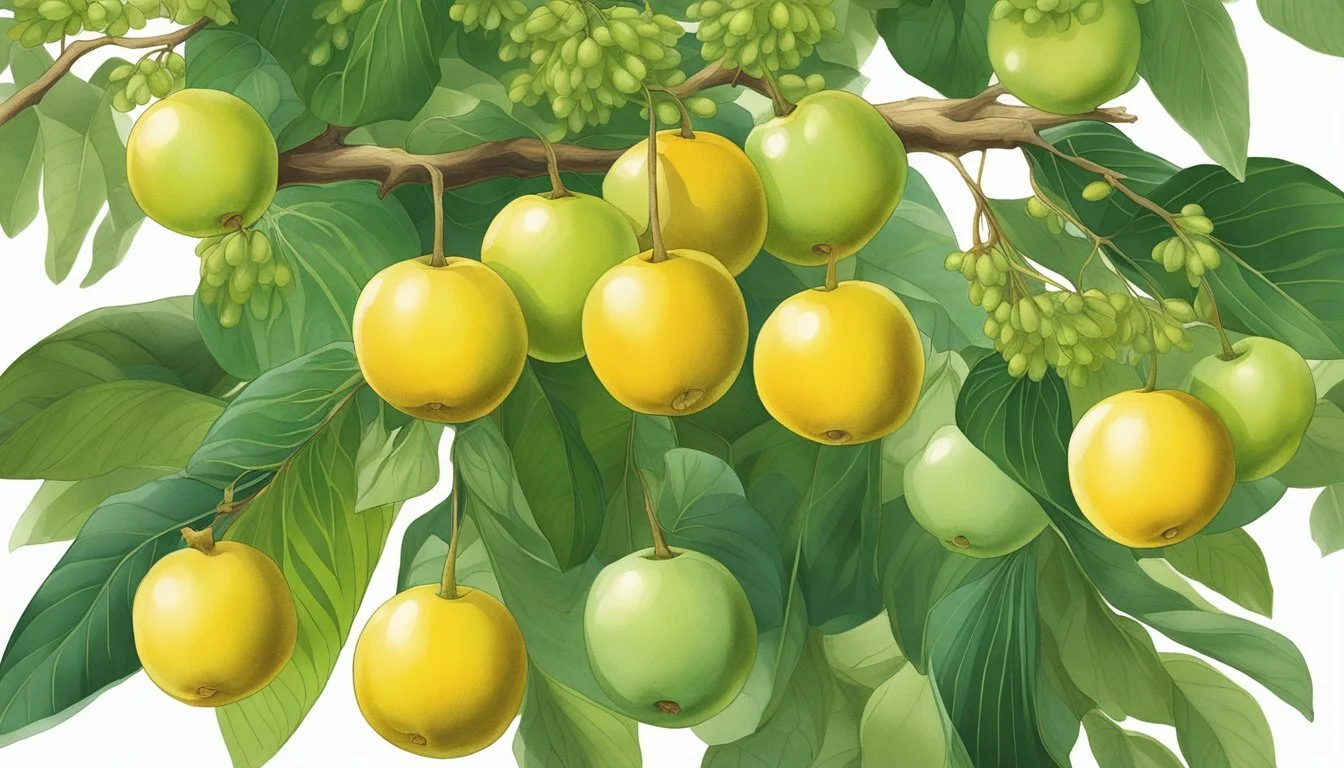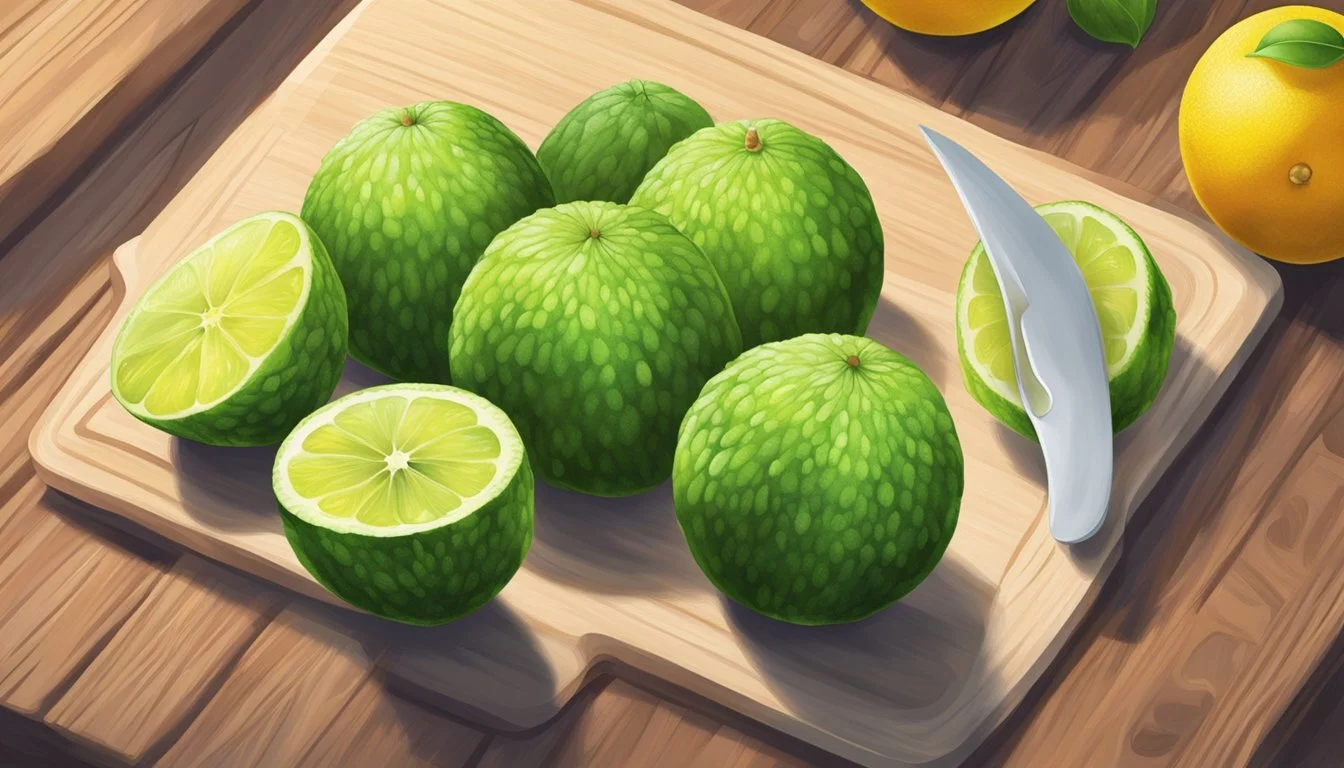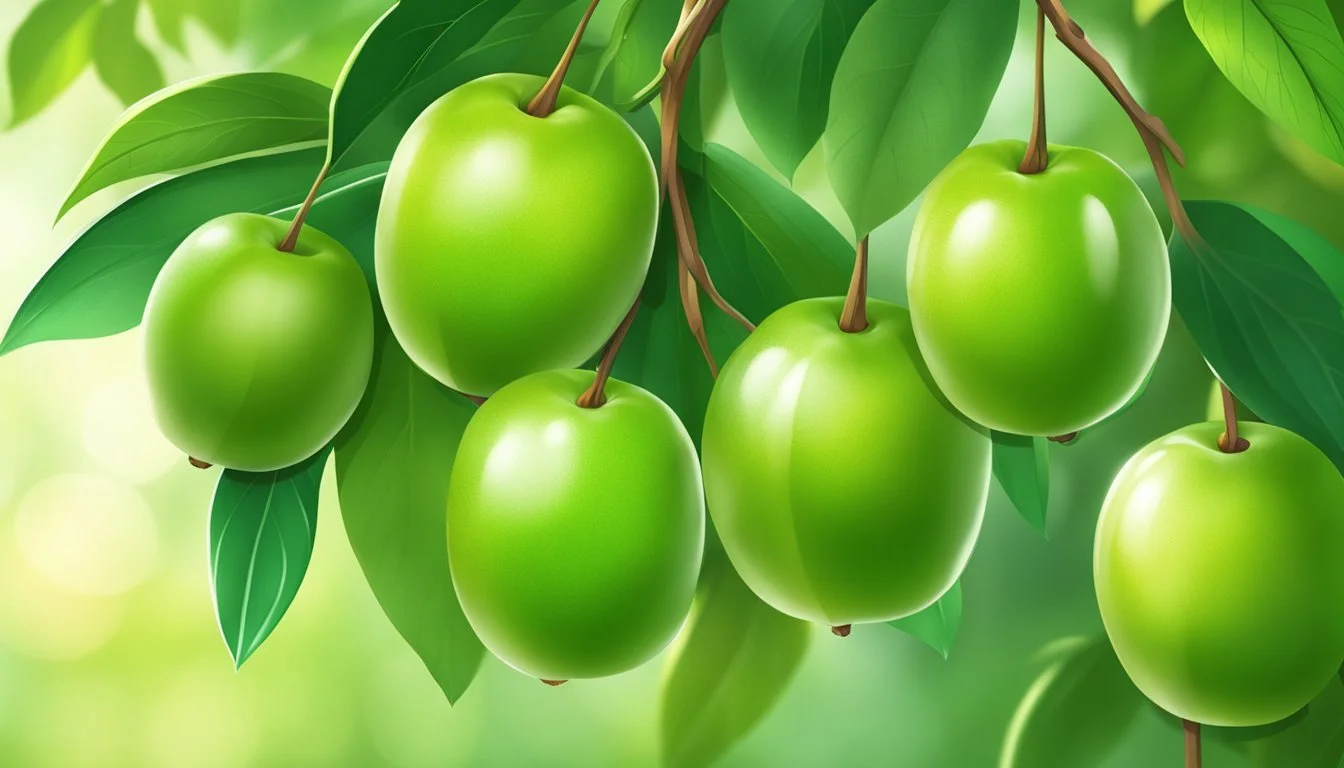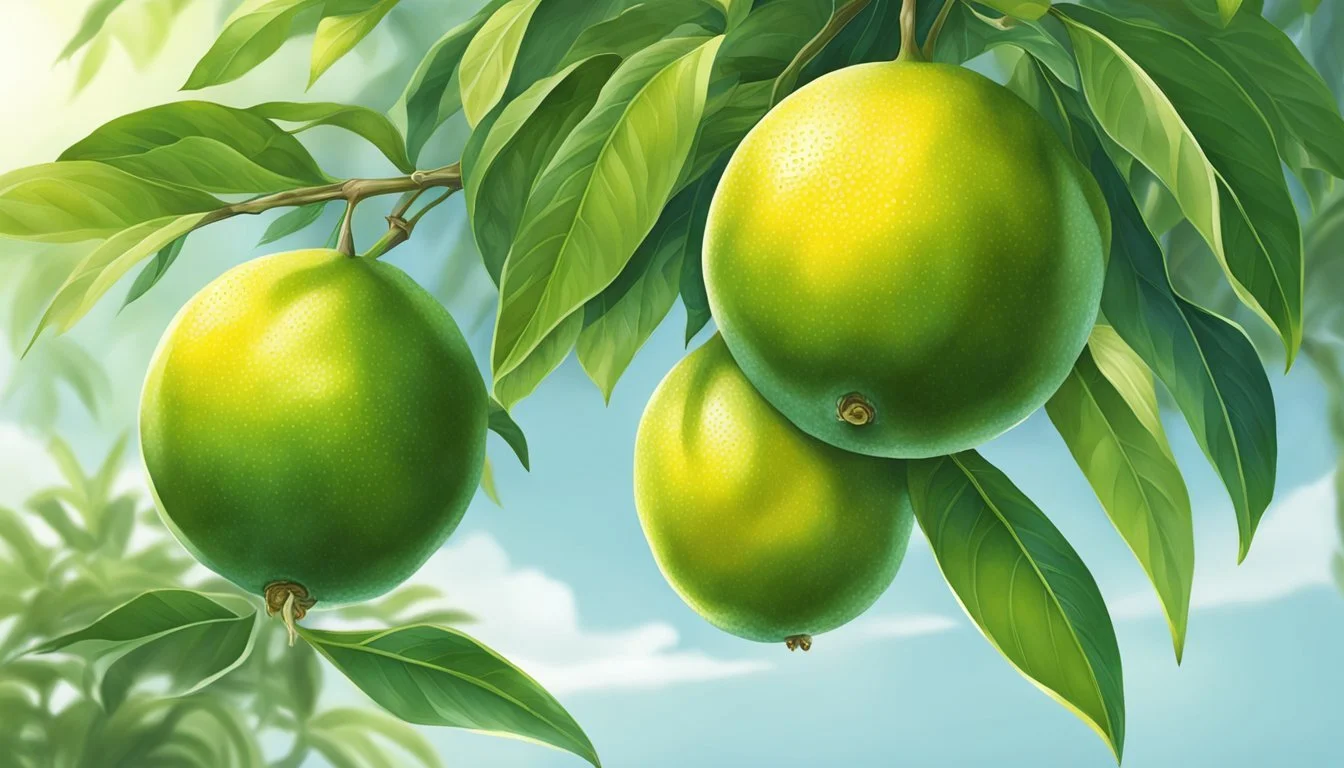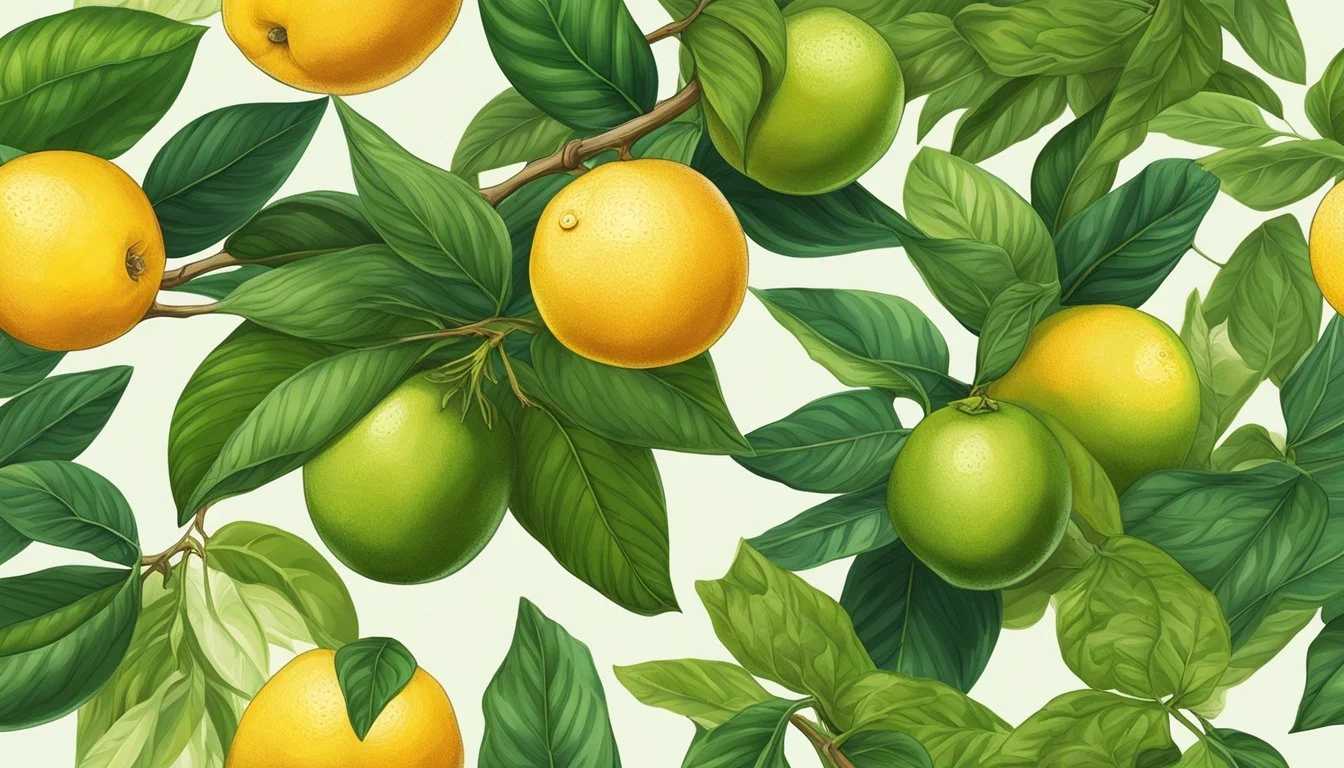How to Tell if a Sudachi is Ripe
Essential Tips for Perfect Citrus Selection
Sudachi, a small Japanese citrus fruit, offers a unique tartness that enhances a variety of dishes. Identifying the perfect ripeness of this fruit is crucial for both culinary experts and enthusiasts aiming to exploit its robust flavor profile. Typically harvested while still green, sudachi ripens to a deep yellow color, indicating it is at its peak of flavor. The key to utilizing sudachi lies in understanding both its physical ripeness cues and the optimal timing for its harvest, straddling the line between its bright acidity and subtle sweetness.
The use of sudachi ranges from a zesty addition to alcoholic beverages to a seasoning agent for sashimi, soups, and noodles. There's more to this fruit than its tart juice; its zest can be used as a garnish, adding a piquant aroma to dishes. With its distinct fragrance and taste, a perfectly ripe sudachi can elevate a dish from good to exquisite. Sudachi fruit also offers nutritional benefits, being a source of vitamin C and other beneficial compounds. Recognizing a ripe sudachi not only promises culinary delight but also a boost to well-being.
Key Takeaways
A ripe sudachi turns a deep yellow color and emits a sweet citrus fragrance.
The flavor of sudachi is best utilized in Japanese cuisine, often as a juice or zest.
Selecting a ripe sudachi contributes to both the taste profile and nutritional value of a dish.
Understanding Sudachi
Sudachi is a citrus fruit prized for its unique flavor and aroma. As a lesser-known relative of the yuzu, it holds its own in the culinary world, particularly in Japan.
Origins and Characteristics
Sudachi (Citrus sudachi) is a small, round, green citrus fruit originating from Tokushima Prefecture on Shikoku Island, Japan. Typically, it is about the size of a golf ball and is harvested while the skin is still a rich, dark green, although it turns a bright yellow as it fully ripens. Distinguished by its sour taste and strong citrus scent, sudachi is often used in place of lemon or lime in Japanese cuisine.
Nutritional Profile
Sudachi provides an impressive nutritional value. This citrus fruit is rich in Vitamin C, which is essential for a healthy immune system, and it also contains Vitamin A, known for maintaining good vision and skin health. Minerals like potassium and calcium are also found in sudachi, contributing to its overall nutritional benefits.
Vitamin C: Important for immune function and skin health
Vitamin A: Supports vision and skin maintenance
Potassium: Helps regulate fluid balance and nerve signals
Calcium: Essential for bone health and muscle function
Sudachi may be a small fruit, but its burst of flavor and nutritional content make it a valuable and distinctive ingredient in the culinary landscape.
Identifying Ripeness
Properly assessing the ripeness of sudachi is essential for the best taste experience. The ripe fruit will exhibit certain characteristics across color, texture, and aroma.
Color Indicators
A sudachi transitions from green to a rich yellow or orange hue as it matures. Initially, green skin signifies an unripe fruit, which may still possess a tart flavor. As the sudachi ripens, the skin will gradually turn a deep yellow color, an indication of peak ripeness. It's important to note that while a completely yellow skin signals a ripe sudachi, a greenish-yellow fruit may still require time to fully mature.
Unripe: Green skin
Ripe: Deep yellow to orange skin
Textural Clues
The texture of a sudachi's skin offers clues to its ripeness. An unripe sudachi tends to have firm skin, whereas a ripe sudachi will feel slightly soft to the touch. It should yield a little when pressed gently, indicating that the interior is likely juicy and ready to be eaten. However, if the skin is too soft or begins to wrinkle, this could signify that it is overripe.
Unripe: Firm skin
Ripe: Slight softness
Aroma and Flavor Signals
A ripe sudachi has a strong, sweet aroma, which might remind one of a ripe papaya's fruity fragrance. This sweet aroma indicates that the sudachi has developed its flavor profile and is ready for consumption. When tasted, the ripe sudachi should have a balance of sweetness with a characteristically citrusy tartness. If the aroma is lacking or the taste is excessively sour, it is likely that the fruit is still unripe.
Unripe: Little to no fragrance, overly tart taste
Ripe: Strong, sweet aroma, balanced sweet and tart taste
Harvest and Post-Harvest Handling
Proper harvesting and storage techniques are crucial for maintaining the quality and extending the shelf life of sudachi. Paying attention to the fruit's color change and handling them with care will ensure that their unique flavor is preserved from the tree to the table.
Harvesting Tips
When harvesting sudachi, one should look for a slight color change from dark green to a lighter green, which indicates maturity. It is essential not to wait until the fruit turns completely yellow, as this suggests over-ripening. Gentle handling is key to prevent bruising. Sudachi should be cut from the tree with scissors or pruning shears rather than pulled off to avoid damaging the fruit and the tree. Harvesting should be done during the cooler parts of the day to reduce the fruit's exposure to ethylene gas produced by the sun’s heat, which can accelerate ripening and potentially reduce shelf life.
Inspect for ripeness: Slight color change to lighter green
Use proper tools: Scissors or pruning shears
Time of day: Cooler periods to minimize ethylene exposure
Storing Sudachi
After harvest, proper storage is imperative to retain the sudachi's zestful juice and aroma. They should be stored in a refrigerator at approximately 5°C (41°F) to slow down the respiration rate and production of ethylene, thus prolonging shelf life. If refrigeration is not immediately available, sudachi can be kept in a cool, well-ventilated place away from direct sunlight. For smaller quantities, placing sudachi in a paper bag can help regulate humidity and ethylene concentration, although they should still be transferred to cold storage as soon as possible.
Refrigeration temperature: Around 5°C (41°F)
Non-refrigerated storage: Cool, ventilated, and away from sunlight
Use of paper bag: To manage humidity and ethylene for short periods
Using Sudachi in Cuisine
Sudachi is a versatile citrus fruit integral to Japanese gastronomy, treasured for its ability to enhance a variety of dishes with its zesty flavor. In culinary practice, sudachi is not typically eaten as a whole fruit but is instead used for its juice and zest to complement and elevate other flavors in the cuisine.
Traditional Japanese Dishes
Sudachi plays an essential role in traditional Japanese dishes. It serves as a favored garnish, lending a refreshing acidity that balances the flavors. In dishes such as soba (buckwheat noodles) and various seafood preparations, a squeeze of sudachi juice can be transformative. A key example is the use of sudachi in ponzu sauce—a staple in Japanese cuisine—which is a blend of sudachi juice, vinegar, soy sauce, and often mirin and dashi. Ponzu sauce is the quintessential dipping sauce that complements the savory flavors of grilled meats and sashimi.
Common uses in traditional dishes include:
As a garnish for noodles and soups
Part of the citrus base for ponzu sauce
Flavor enhancer for salad dressings and marinades
Modern Culinary Applications
The modern culinary world has embraced sudachi for its distinctive taste, incorporating it into cocktails, salad dressings, and innovative sauces. Its juice is often used to create vinaigrettes that resonate with a bright, bold tang, distinguishing it from commonly used citruses like lemons and limes. Chefs prize sudachi's zest to infuse a tropical flair into desserts, particularly where a touch of citrus is desired without overwhelming sweetness or bitterness.
Innovative uses in the culinary scene:
A zestful twist in alcoholic beverages, especially cocktails
A citrus element in sauces and glazes for chicken and other meats
A subtropical enhancement for desserts, providing a unique flavor profile
Sudachi's unique attributes also position it as an interesting substitute for its citrus relatives such as lemon, lime, or the closely related kabosu, often allowing chefs to experiment with new flavor combinations and to stand out in a crowded culinary landscape. Its natural affinity for enhancing umami makes it particularly valuable in the context of Japanese-inspired or fusion dishes.
Selection and Purchase
When searching for sudachi at the market or grocery store, one should pay special attention to the fruit's color, skin, and firmness to ensure optimal ripeness and quality.
Choosing the Best at the Market
Color Changes: A fully ripe sudachi transitions from a vibrant green to a deep yellow hue. In its maturation stage, the fruit should display its characteristic green color, which indicates its sour profile, ideal for culinary uses.
Firmness: The fruit should yield slightly to pressure, but not be overly soft. A perfect sudachi is firm to the touch, indicating freshness.
Unblemished Skin: Inspect the skin closely for any blemishes or dark spots, which could suggest over-ripeness or infection. Opt for sudachi with smooth, unblemished skin.
Avoiding Poor-Quality Sudachi
Bruises and Dark Spots: Avoid purchasing sudachi with visible bruises or dark spots as these could be signs of internal spoilage or reduced quality.
Infection Signs: Watch out for any signs of mold or infection which can significantly compromise the fruit's flavor and safety.
Consistency: Ensure that the sudachi feels consistent in texture all around. Any soft spots might indicate the fruit is past its prime quality.
By adhering to these guidelines, shoppers can confidently select the best sudachi for their culinary needs.
Health Benefits and Nutrients
Sudachi is a Japanese citrus fruit recognized for its unique flavor and nutritional properties. It boasts an array of health benefits due to its rich content of vitamins, minerals, and dietary fiber.
Vitamins and Minerals
Sudachi is an excellent source of Vitamin C, crucial for immune system function, skin health, and iron absorption. It also contains Vitamin A, which is important for vision and immune health, and Vitamin E, known for its antioxidant properties. The fruit provides vital minerals including calcium, iron, and magnesium, supporting bone health and physiological functions.
Vitamin C: Immune booster and skin health promoter
Vitamin A: Essential for good vision and robust immune response
Vitamin E: Protects cells from oxidative stress
Dietary Fiber and Digestion
Dietary fiber in sudachi aids in maintaining a healthy digestive system, contributing to gastrointestinal health and promoting regular bowel movements. The fiber content also helps in providing a sense of fullness, which can assist in weight management.
Fiber: Supports digestive health and helps control appetite
Enhancing Your Diet with Sudachi
Sudachi, a small Japanese citrus fruit, offers a sharp, acidic flavor and is rich in Vitamin C. This fruit can be a versatile addition to a balanced diet, bringing both nutrition and a zest that enhances various dishes.
Incorporating into Daily Meals
One can effortlessly integrate sudachi into daily eating routines to boost Vitamin C intake and add a tangy twist. Incorporating the juice or zest of this fruit into meals is straightforward:
Breakfast: Add zest to yogurt or oatmeal.
Lunch: Squeeze the juice over a fresh salad for a citrusy dressing.
Dinner: Use wedges as a garnish for grilled fish or meats.
In its green, unripe state, the fruit is particularly juicy and tart, making it ideal for these applications.
Creative Recipes and Pairings
Sudachi is not only a garnish but can also be the star ingredient in various recipes, where its flavor profile can be fully appreciated.
Seafood Pairings: Enhance sushi or sashimi with a squeeze of sudachi for a fresh, bright note.
Desserts: Incorporate the juice into sorbets or citrus-based desserts for a subtle, aromatic twist.
Marinades: Combine sudachi juice with soy sauce, honey, and spices to create a marinade that brings a soft, succulent texture and depth of flavor to meats and vegetables.
Ripening Techniques
In ensuring a Sudachi is ripe and ready for consumption, one may employ both natural and expedited methods. These techniques harness natural processes and can be adapted to suit various conditions.
Natural Methods
One can allow Sudachis to ripen at room temperature in a well-ventilated space, away from direct sunlight. This process relies on the fruit’s natural ethylene gas production to facilitate the ripening. It's important to employ one's senses, monitoring the color transition from green to yellow and a fragrance change to gauge ripeness.
Accelerating the Process
For those who wish to speed up the ripening, placing Sudachis in a paper bag with ethylene-producing fruits, such as apples or bananas, will create a concentrated ethylene environment. Heat can also be a factor in accelerating the process; thus, storing the fruit in a warmer area of the household could promote faster ripening. However, one must be cautious not to expose the fruit to excessive heat to avoid spoilage.
Understanding Overripeness
Recognizing when a sudachi is overripe is crucial for ensuring optimal flavor and preventing waste. The transition from ripe to overripe can be subtle, so understanding the signs is important.
Signs of Overripe Fruit
Texture: An overripe sudachi may become noticeably mushy to the touch. Unlike the slight give of ripe fruit, overripe sudachis lack firmness and may have areas that feel soft and indented.
Appearance: The skin of an overripe sudachi can appear wrinkled and lack the bright, glossy finish characteristic of ripe fruit.
Smell: When sudachis surpass ripeness, they may emit a sour or fermented smell, indicating the beginning stages of decay.
Taste: The previously tangy and zesty flavor becomes unpleasantly sour, losing the delicate balance that defines the fruit's profile.
Preventing Waste
Regular Inspection: Check sudachis regularly for signs of overripeness, focusing on texture and aroma.
Proper Storage: Store sudachis in a cool, dry place, and if they begin to overripen, refrigerate to slow down the process.
Timely Consumption: Use overripe sudachis in recipes that can accommodate their altered taste and texture, like juices or sauces, where the sourness can be balanced with other ingredients.
By recognizing these signs and taking prompt steps, overripeness can be managed effectively.
Frequently Asked Questions
How can one tell if a Sudachi is ripe by its color?
A ripe Sudachi should exhibit a deep, rich green hue. As it ripens, it may develop yellowish undertones, but a vibrant green is typically a good indication of ripeness.
What physical signs indicate a Sudachi is ripe?
One should look for a firm yet slightly give when gently pressed. A mushy texture may indicate over-ripeness. Ripe Sudachis are also typically small and round, with a smooth or slightly bumpy outer skin.
Is there a smell test to determine Sudachi ripeness?
Yes, a ripe Sudachi will emit a fragrant, citrus aroma that is more noticeable as it reaches peak ripeness. If there's little to no scent, the fruit might still be underripe.
How does ethene affect Sudachi ripeness?
Like many fruits, Sudachis produce ethene gas as they ripen, which accelerates the ripening process. If stored in a closed environment with other ethene-producing fruits, Sudachis may ripen faster.
How does one assess the taste of a ripe Sudachi?
A ripe Sudachi should taste tangy and slightly sweet, with a refreshing acidity. Any bitterness or lack of juice may be indicative of an underripe fruit.
Color: Rich green, potentially with yellow tones
Physical Appearance: Firm with slight give, smooth/bumpy skin
Smell: Fragrant, citrus aroma
Taste: Tangy, sweet, acidic
These hints should help identify ripeness without making exaggerated claims about the fruit's characteristics. Always remember that individual fruits can vary, and experience will refine one's ability to select the best Sudachis.
Conclusion
Determining the ripeness of sudachi is straightforward when one is familiar with its traits. The color is a primary indicator, with ripe sudachi turning from green to a deep yellow hue. However, for culinary purposes, green sudachi are preferable due to their optimal juice content. A simple olfactory test can assist as well; a ripe sudachi emits a sweet citrus fragrance.
Here is a quick checklist to assess sudachi ripeness:
Color: Green transitioning to deep yellow
Scent: Noticeably sweet and citrusy
Texture: Slightly give under gentle pressure
In the kitchen, this citrus shines when its zest and juice are used to enhance various dishes. Whether infused into marinades or served as a garnish, sudachi provides a unique flavor profile that is sour and tangy.
Sudachi, primarily cultivated in Tokushima Prefecture, has become an integral ingredient in Japanese cuisine. Its subtle yet distinct taste complements delicacies such as grilled fish, noodles, and hot pots. To experience the optimal flavor, it is key to select sudachi at the right stage of ripeness according to the intended use.


